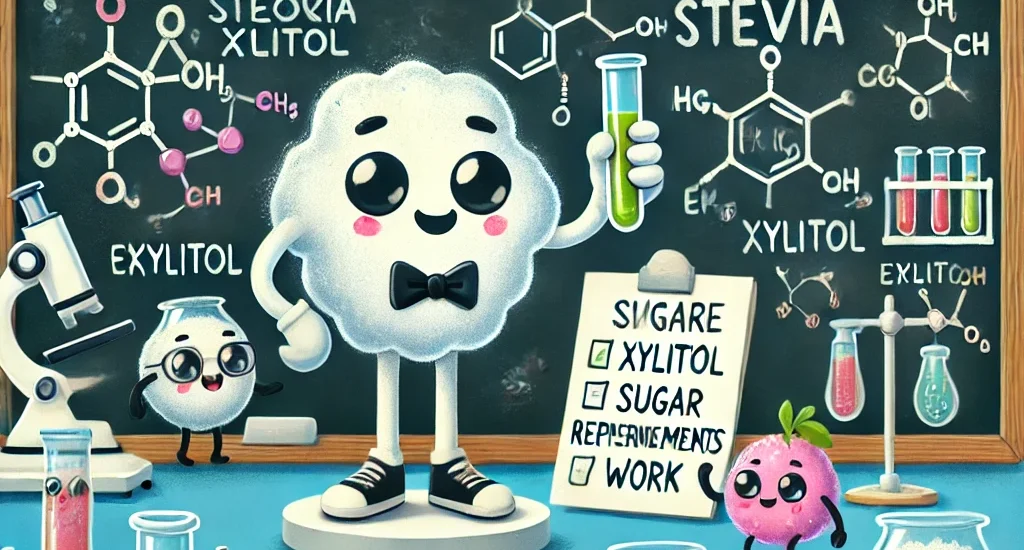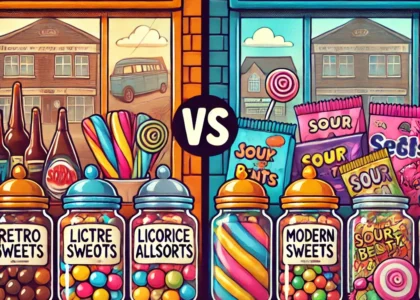Introduction
Sugar is a fundamental part of human cuisine—especially in the world of sweets and chocolate. But not all sugars are created equal. From traditional sucrose to modern sugar substitutes, understanding the science of sweetness gives us insight into how we experience flavor, manage health, and innovate in confectionery.
This article delves into how sugar works on a molecular level, how sugar alternatives compare, and what it all means for chocolate and sweet lovers—particularly those watching their sugar intake. By the end, you’ll be better equipped to evaluate ingredients, appreciate taste differences, and choose treats that align with your health goals.
1. What Is Sweetness?
Sweetness is one of the five basic tastes, alongside salty, sour, bitter, and umami. It’s primarily triggered by sugar molecules binding to sweet receptors on the tongue, specifically the T1R2/T1R3 heterodimer receptors.
The experience of sweetness is influenced by:
- Molecular structure of the sweetener
- Saliva composition
- Temperature of the food
- Other taste interactions (e.g., bitterness or acidity)
Each sweetener interacts differently with these receptors, resulting in variations in perceived sweetness, aftertaste, and intensity.
2. Sucrose: The Standard Sweetener
Sucrose (common table sugar) is a disaccharide composed of glucose and fructose. It serves as the gold standard against which all other sweeteners are measured.
Key Functions of Sucrose:
- Sweetness: Provides a clean, well-rounded sweet flavor.
- Texture: Adds bulk and moisture in baking and candy-making.
- Preservation: Inhibits microbial growth by lowering water activity.
- Maillard Reaction: Facilitates browning and complex flavor development in cooking.
In chocolate, sugar balances the bitterness of cocoa and contributes to melt and mouthfeel.
3. Natural Sugar Alternatives
In response to rising concerns about sugar intake and metabolic health, many brands have turned to natural sugar substitutes. Here are some of the most common:
Stevia
- Derived from Stevia rebaudiana leaves.
- Up to 300 times sweeter than sugar.
- Zero calories and does not raise blood glucose.
- Can have a bitter or licorice-like aftertaste.
Monk Fruit (Luo Han Guo)
- Extracted from a small melon native to China.
- Contains mogrosides, which are intensely sweet.
- Zero calories, low glycemic index.
- Often blended with other sweeteners to improve taste.
Coconut Sugar
- Made from the sap of coconut palm flowers.
- Contains trace nutrients and inulin, a prebiotic fiber.
- Slightly lower glycemic index than table sugar.
- Has a caramel-like flavor that blends well in confections.
4. Sugar Alcohols
Sugar alcohols, or polyols, are commonly used in sugar-free candies and chocolates. They occur naturally in fruits and vegetables and have fewer calories than sugar.
| Name | Sweetness vs. Sucrose | Calories (per gram) | Notes |
|---|---|---|---|
| Xylitol | 1:1 | 2.4 | Tooth-friendly, can cause GI issues |
| Erythritol | ~0.7x | 0.24 | Cooling effect, minimal impact on glucose |
| Maltitol | ~0.9x | 2.1 | Common in low-carb chocolate |
| Sorbitol | ~0.6x | 2.6 | Less commonly used in chocolate |
⚠️ Excessive consumption of sugar alcohols may cause digestive discomfort due to incomplete absorption in the gut.
5. Artificial Sweeteners
Synthetic sweeteners are regulated food additives approved for use worldwide. Though controversial, they’re extensively researched.
Examples:
- Aspartame: 200x sweeter than sugar, used in diet sodas and some candies.
- Sucralose: 600x sweeter; stable in baking and cooking.
- Acesulfame K: 200x sweeter; often blended with other sweeteners.
While these are calorie-free and blood-sugar neutral, taste profiles vary and can include metallic or lingering aftertastes.
6. Impact on Chocolate Flavor and Texture
Substituting sugar in chocolate affects more than sweetness. It alters:
a. Flavor Profile
- Some substitutes (like stevia) amplify bitterness in dark chocolate.
- Others (like erythritol) add a cooling effect that clashes with warm cocoa tones.
b. Mouthfeel and Texture
- Sugar contributes to creaminess and snap in tempered chocolate.
- Replacements can lead to a gritty or dry texture if not properly formulated.
c. Melting Behavior
- Sugar replacements may affect how chocolate melts on the tongue—a crucial sensory aspect.
- Some alter the fat/sugar ratio, impacting structure.
d. Shelf Stability
- Sugar helps inhibit moisture and preserve freshness.
- Substitutes like inulin may introduce more humidity sensitivity.
7. Glycemic Index & Blood Sugar
One of the biggest drivers of sugar replacement in sweets is the desire to avoid blood sugar spikes.
| Sweetener | Glycemic Index |
|---|---|
| Glucose | 100 |
| Sucrose | 65 |
| Coconut Sugar | 54 |
| Honey | 58 |
| Xylitol | 12 |
| Erythritol | 0 |
| Stevia | 0 |
| Monk Fruit | 0 |
Substitutes like erythritol and monk fruit are ideal for diabetics, low-carb, or keto diets because they don’t spike insulin.
8. Psychological & Sensory Considerations
Interestingly, some studies suggest sweetness without calories may confuse the brain, leading to cravings or compensatory eating.
Also, sensory satisfaction can be lower with sugar-free chocolate due to:
- Different melt point
- Off-notes or lingering bitterness
- Lack of creaminess
Brands often blend multiple sweeteners to optimize taste and mimic sugar’s functionality.
9. The Future of Sweetness in Sweets
Innovation continues in the sugar-replacement space. New technologies include:
- Rare sugars: Allulose and tagatose mimic sugar closely but are metabolized differently.
- Enzyme-treated stevia: Reduced bitterness.
- Prebiotic fibers: Inulin and chicory root provide bulk and mild sweetness.
- Micro-encapsulation: Delivers delayed sweetness or flavor masking.
Major confectionery brands are now investing in sugar science—paving the way for chocolate that’s healthier, tastier, and more bio-individualized.
Conclusion
Sweetness is more than just a flavor—it’s a biological signal, a cultural pleasure, and a modern food science battleground. Whether you prefer the straightforward sweetness of sucrose or the innovative promise of erythritol, monk fruit, or stevia, knowing the science behind what you’re tasting enhances your enjoyment—and helps you make smarter choices.
Next time you unwrap a bar of chocolate or reach for a sugar-free treat, consider the complex chemistry and sensory decisions behind it. Sweetness is a science—and now, you’re fluent in it.
References
- https://www.ncbi.nlm.nih.gov/pmc/articles/PMC5513700/
- https://www.ncbi.nlm.nih.gov/pmc/articles/PMC5526100/
- https://www.fda.gov/food/food-additives-petitions/overview-food-ingredients-additives-colors
- https://www.healthline.com/nutrition/stevia-vs-sucralose
- https://www.ifst.org/resources/information-statements/sugar-reduction
- https://www.diabetes.org/healthy-living/recipes-nutrition/understanding-carbohydrates/artificial-sweeteners





